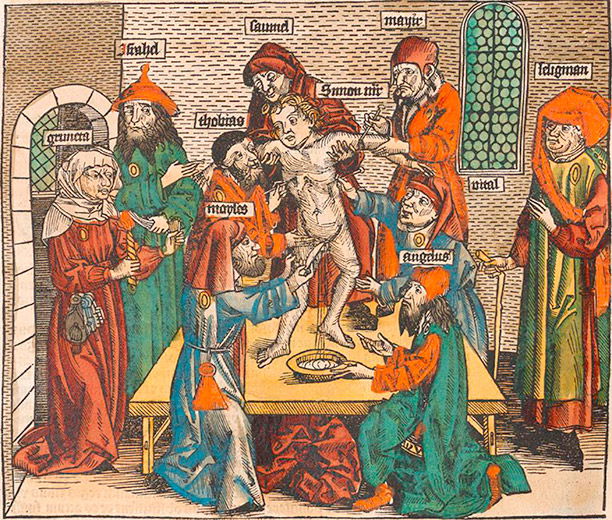Jews and the Renaissance
The persecution and execution of Jews in 15th-century Italy highlights the ambiguous attitudes of Renaissance intellectuals towards Jewish people, their beliefs and their historical relationship with Christian theology, as Stephen Bowd explains.
 On Easter Sunday, March 26th, 1475, the corpse of a young child called Simon was found floating in a ditch in the city of Trent (now in Italy). Simon had been missing for several days and rumours had circulated implicating the local Jewish community in his disappearance. The house of Samuel, the leader of the small Jewish community, was investigated by the chief magistrate, Giovanni de Salis, and it was in the dirty stream running through the cellar of Samuel’s house that the boy’s mutilated body was finally discovered. Observing that it bled in their presence, traditionally a sure sign of guilt, six Jews were promptly arrested. Two doctors in the service of the local prince-bishop examined the body in the hospital of St Peter’s Church.
On Easter Sunday, March 26th, 1475, the corpse of a young child called Simon was found floating in a ditch in the city of Trent (now in Italy). Simon had been missing for several days and rumours had circulated implicating the local Jewish community in his disappearance. The house of Samuel, the leader of the small Jewish community, was investigated by the chief magistrate, Giovanni de Salis, and it was in the dirty stream running through the cellar of Samuel’s house that the boy’s mutilated body was finally discovered. Observing that it bled in their presence, traditionally a sure sign of guilt, six Jews were promptly arrested. Two doctors in the service of the local prince-bishop examined the body in the hospital of St Peter’s Church.





